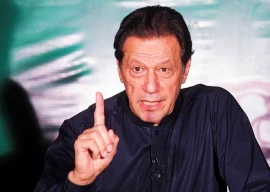
Recently, Prime Minister Yousaf Raza Gilani talked of his party including the demand for a Seraiki province in the PPP manifesto. His critics would immediately see this as his bid to stay politically relevant. But he is not the only one endorsing the new province project. The demand for a Seraiki province was endorsed by Pervaiz Elahi as well, who is a hardcore central Punjabi and should, technically speaking, have not supported such a move. However, who says leaders have to be wise all the time? For Pervaiz Elahi or Yousaf Raza Gilani, the main objective is to push the Sharif brothers. Once threatened with a division of the larger province that they rule, they might agree to shake hands with the establishment. An indicator of whether there is appeasement between the establishment and the Sharif brothers will be if Nawaz Sharif, who is not liked by the establishment, will take a back-seat in his own party.
Ideologically, there are many forces, including the MQM, that would like to see Punjab divided, as that would reduce the power of the larger province and the Sharif brothers as well. Such a division will also set the principle of more divisions elsewhere which, in turn, supports the MQM’s plan to carve out something for itself in urban Sindh. The establishment itself may not be totally averse to the idea, as it will deflect attention from the issue of Punjabi dominance of the state and the security establishment.
Needless to say, the Bahawalpur and Seraiki province indicate two different approaches. In many ways, the establishment in Pakistan is far more comfortable with the idea of a Bahawalpur province than a Seraiki one, mainly because the former is ethnic-neutral. Notwithstanding the legal claim regarding Bahawalpur’s status as a province, the fact is that in the past 60 years and more, the former state of Bahawalpur has become a melting pot for all ethnic groups. The main powerhouse is no longer the Nawab family but Punjabis like Tariq Basheer Cheema — a turncoat who defected from the PPP to the PML-Q. The very people who vociferously opposed the movement for the restoration of Bahawalpur province (1969-71) and were party to the killing of hundreds of innocent people, are now supporting the idea. The very fact that the movement is spearheaded by a person like Mehmood Durrani, who has the reputation of being close to the establishment, indicates the way the winds are blowing.
The Seraiki province, on the other hand, is an ethnicly-potent concept which the establishment does not like. It recognises the concept of Pakistan woven around its multiple identities. Sadly though, the country’s establishment is extremely nervous of a national narrative based on multiple identities.
In any case, both movements deserve attention because they protest the highly skewed distribution of resources, especially in the largest province. For instance, a glance at the development budget for the financial year shows that the highest share goes to Lahore. The district’s development budget is about Rs75 billion. This is in stark comparison to DG Khan’s Rs20.6 billion, Bahawalpur’s Rs17.7 billion, Bahawalnagar’s Rs8.7 billion, and Bhakkar’s Rs4.8 billion. Interestingly, it’s not just a matter of south Punjab. Even north Punjab seems to be suffering vis-à-vis central Punjab. For instance, Attock’s development budget is Rs5.7 billion and Chakwal’s Rs6.5 billion. In fact, Multan, DG Khan, Faisalabad, Gujranwala and Kasur are comparatively better.
Surely the development budget is skewed in favour of the big cities of central Punjab, especially Lahore. But a glance at official figures shows that some cities of south Punjab have done equally well. For instance, the prime minister has put in an effort in recent years to develop Multan due to which the city’s development budget seems to have gone up. Such examples may not absolve the Sharifs of their skewed distribution policy, but it also says something about the lack of capacity of local leaders who were unable to vie for resources. Hence, it is necessary for intellectuals from these areas to look at the errors of their own leadership before they propose the creation of a new entity.
Published in The Express Tribune, April 03rd, 2011.










































COMMENTS (32)
Comments are moderated and generally will be posted if they are on-topic and not abusive.
For more information, please see our Comments FAQ